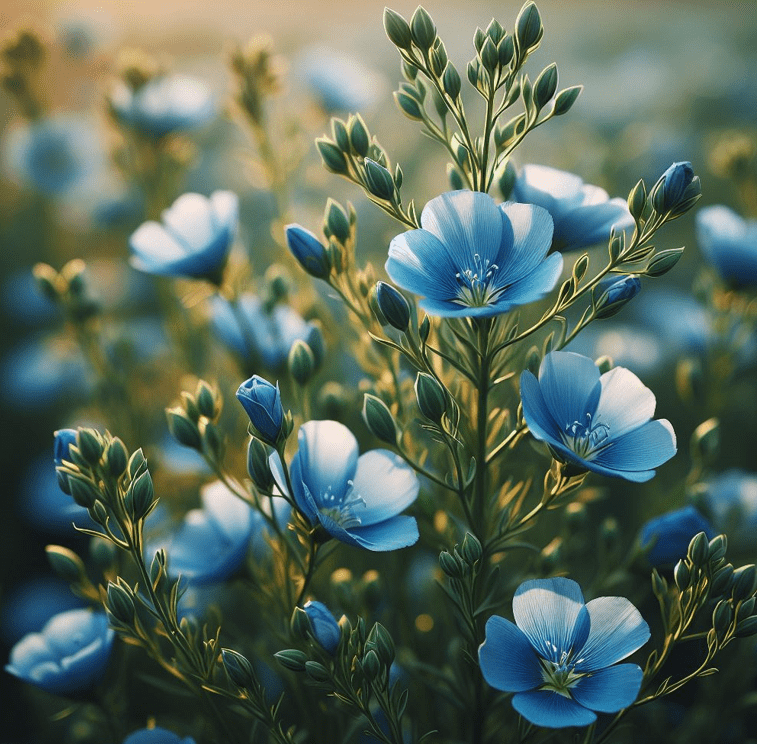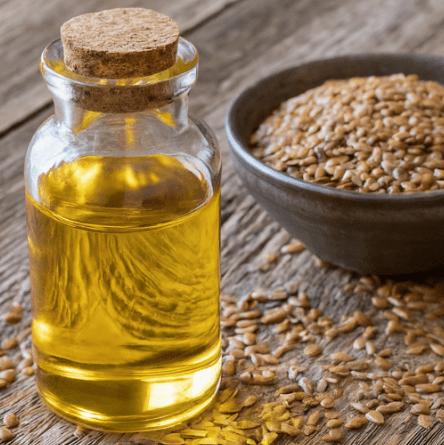
The humble flax plants, with its delicate blue flowers and slender stalk, hides a multitude of uses. Its fibers have clothed civilizations for millennia, its oil nourishes bodies, and its seeds add a nutty crunch to our meals. But did you know you can cultivate this versatile wonder in your garden? Buckle up, plant enthusiasts, because we’re diving into the fascinating world of growing and enjoying flax!
From Pharaohs to Fashionistas: The Fascinating History of Flax Plants
Ancient Threads: Evidence suggests flax cultivation dates back to 8,000 BC in Mesopotamia. Its strong yet flexible fibers made it ideal for weaving linen, a prized fabric revered for its coolness, durability, and beauty. Ancient Egyptians wrapped their mummies in linen, believing it aided their journey to the afterlife. Flax also played a vital role in the economies of Greece and Rome, where it was used for clothing, sailcloths, and even writing materials.

Medieval Marvels: During the Middle Ages, flax cultivation spread across Europe, fueling the textile industry. Guilds of linen weavers emerged, and flax became a valuable trade commodity. Flaxseed oil, extracted from the plant’s seeds, was used for food, medicine, and lighting.

Industrial Revolution & Beyond: The 18th century saw the rise of mechanized flax processing, leading to mass production of linen. However, competition from cheaper cotton eventually overshadowed flax in the textile industry. Today, flax enjoys a resurgence due to its eco-friendly qualities. Linen is once again valued for its luxurious appeal and sustainability, while flaxseed oil is prized for its nutritional benefits.
Fashion Forward: Beyond textiles, flax finds modern applications in fashion, from eco-friendly clothing and accessories to biocomposites used in sustainable footwear. Additionally, flaxseed oil is a popular health supplement, rich in omega-3 fatty acids and antioxidants.

A Look Ahead: As interest in sustainable practices grows, flax plants are positioned for a bright future. Its versatility and eco-friendly nature make it a valuable resource for various industries. From gracing the bodies of pharaohs to adorning modern fashionistas, the story of flax is far from over. This remarkable plant continues to weave its unique thread into the tapestry of human history, offering exciting possibilities for the future.
Cultivating Your Own Patch of Flax Heaven
Growing flax is surprisingly easy, even for beginner gardeners. Here’s what you need to know:
Location & Soil: Choose a sunny spot with well-draining soil. Sandy loam is ideal, but flax adapts well to most soils.
Planting: Sow seeds directly outdoors in early spring or late summer/early fall. Scatter them thinly and rake lightly to cover. Keep the soil moist until germination.
Watering & Feeding: Water regularly, especially during dry spells. Avoid overwatering, as flax dislikes soggy soil. Fertilize lightly with a balanced fertilizer once during the growing season.
Harvesting: For fiber, harvest plants when the seed bolls turn brown and stalks turn yellow. For seeds, wait until the bolls dry and burst open.
Tips & Tricks
- Flax doesn’t transplant well, so direct sowing is recommended.
- Thin seedlings to prevent overcrowding.
- Companion planting with clover or other legumes can help add nitrogen to the soil.
- Mulch around the base of plants to retain moisture and suppress weeds.
Flax Care: Anticipating and Solving Challenges
Like any plant, flax faces potential hurdles. Here’s how to keep yours thriving:
Pests & Diseases: Look for aphids, flea beetles, and fungal diseases. Use organic methods like neem oil or insecticidal soap for pest control. Good air circulation and proper watering can help prevent fungal issues.
Weather: Flax tolerates moderate cold but can struggle in extreme heat or drought. Provide shade during scorching days and water deeply during dry spells.
Overwintering: In colder climates, harvest flax for fiber before the first frost. For seed production, you can overwinter mature plants by mulching heavily around the base.
Flax: Beyond the Garden, Onto Your Plate and Wardrobe
The beauty of flax lies in its versatility. Here are just a few ways to enjoy your homegrown harvest:
Fiber: Retting and processing the stalks yields linen fibers, perfect for spinning yarn or weaving fabric. While this process is more advanced, the rewards are unique and sustainable textiles.
Oil: Cold-press the seeds to extract golden flaxseed oil, a delicious and nutritious addition to salad dressings, smoothies, and even homemade skincare products.
Seeds: Sprinkle ground or whole flaxseeds on cereal, yogurt, or baked goods for a boost of fiber and healthy fats. You can even grind them into flour for gluten-free baking.
Flowers: The delicate blue blooms of flax are a delight in bouquets and attract beneficial pollinators to your garden.
Crafts: Dried flax stalks add a rustic touch to wreaths, wall hangings, and other decorative creations.
Flaxseed Oil vs. Flaxseeds: Which is Right for You?
Final Thought
In the verdant tapestry of our gardens, the flax plant (Linum usitatissimum), also known as common flax, stands out for its delicate blue flowers and robust flax fibers and remarkable versatility. From the nutritious flax seeds, rich in fatty acids, to the durable fibers woven into linen, every part of the flax plant has a role to play in our daily lives.
Pressed from the seeds, Linseed oil serves both culinary and industrial purposes, embodying the essence of sustainability. Whether admiring the vibrant blue flax flowers or the scarlet flax variant, each bloom contributes to the plant’s beauty and utility. Growing flax requires a commitment to full sun and well-draining soil rich in organic matter, but the rewards are plentiful.
From the seed capsules that house the future generation of flax seeds to the perennial nature of some flax species, every aspect of the plant is a testament to its resilience and adaptability. As gardeners and enthusiasts explore cultivating and harvesting flax, they connect with an ancient tradition that spans cultures and continents.
The flax plant, with its deep roots in the family Linaceae, continues to be a source of inspiration and a symbol of the intertwining of beauty and utility in the natural world. Whether used in the garden, the shop, or the home, flax, in its many forms, remains a cherished staple, embodying the spirit of growth and renewal.






















